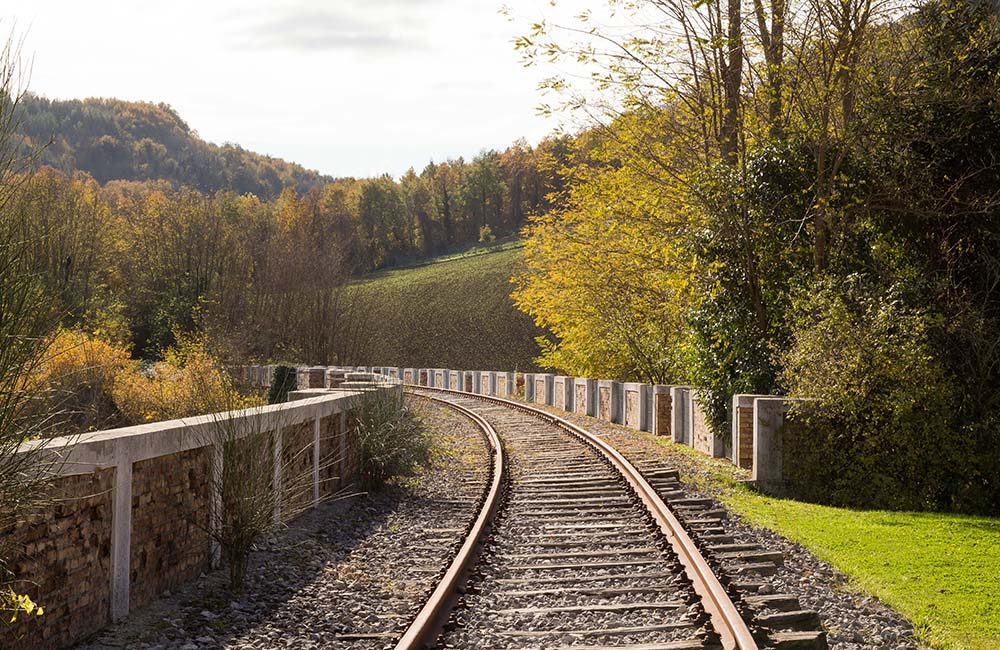{: it}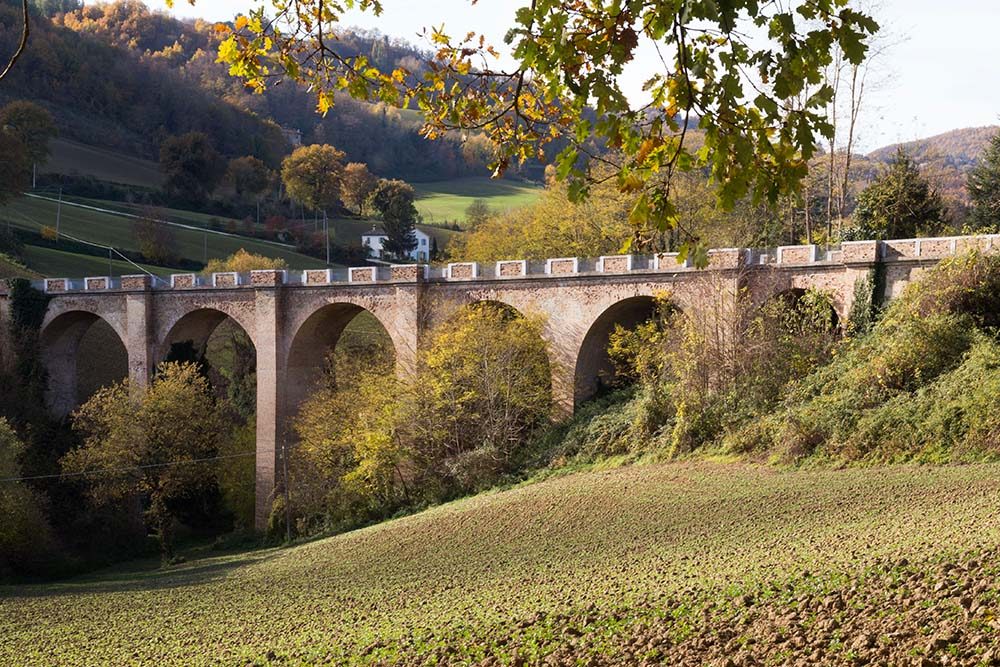 Once upon a time there was a railway that led to Urbino……. That is, the railway which, starting from the coast, arrived in the ducal city and back, 48 km to be covered at the "electrifying" speed of 60 km per hour. Early in the morning the train waited, huffing and nervous, at the Fano station for the passengers of the super-fast Milano Lecce train which often arrived late, the overcrowded carriage was left in a hurry so as not to miss the connection and when you entered the other train the cold wooden benches and the a vague smell of disinfectant welcomed you spartanly, people sat down quickly, just enough time to hear the conductor whistle and close the doors. The train left and began the journey through time, with the typical calm of the rural world, in the countryside where it slowly advanced: from the plowed fields of the plain along the Metauro at times until entering the territory full of woods and high hills typical of the duchy of Montefeltro.
Once upon a time there was a railway that led to Urbino……. That is, the railway which, starting from the coast, arrived in the ducal city and back, 48 km to be covered at the "electrifying" speed of 60 km per hour. Early in the morning the train waited, huffing and nervous, at the Fano station for the passengers of the super-fast Milano Lecce train which often arrived late, the overcrowded carriage was left in a hurry so as not to miss the connection and when you entered the other train the cold wooden benches and the a vague smell of disinfectant welcomed you spartanly, people sat down quickly, just enough time to hear the conductor whistle and close the doors. The train left and began the journey through time, with the typical calm of the rural world, in the countryside where it slowly advanced: from the plowed fields of the plain along the Metauro at times until entering the territory full of woods and high hills typical of the duchy of Montefeltro.
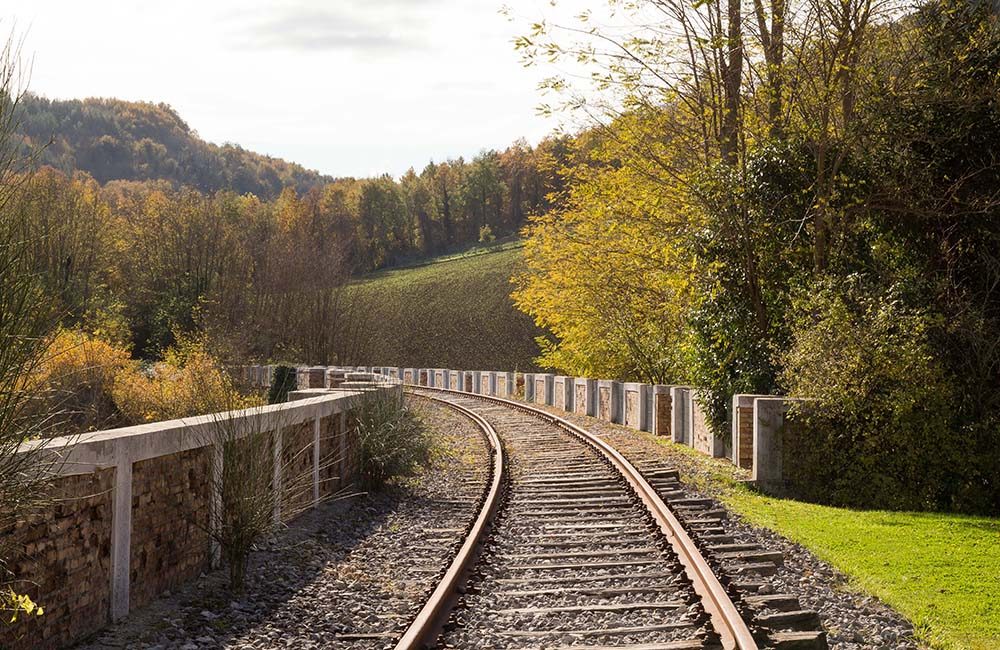
In the era when cell phones didn't yet exist, you knew that you would use that time for many things: simply admiring the beauty of the landscape, and it was a truly stupendous sight, reading or conversing with your neighbor, who was often a student or a professor, you could recognize him by his folder full of books or notes, some students who were ready for an exam took the opportunity to review the lesson or remember the most salient topics, and then there was always, I don't know why, some woman crocheting. Winter was the most exciting period, you left the coast immersed in the rain and then as you went up you happened to encounter snow. And he was often in Urbino. It was so cold in winter that the train was the best way to get there, which didn't stop.
The most exciting route, the one that everyone remembers with great nostalgia - the last race took place in 1987 - was the Fermignano Urbino stretch where the gradient fluctuated between 21 and 25% and the locomotive engine, sometimes powered by diesel if not under steam, you could feel it working through the curves and climbs while the pace became even slower.
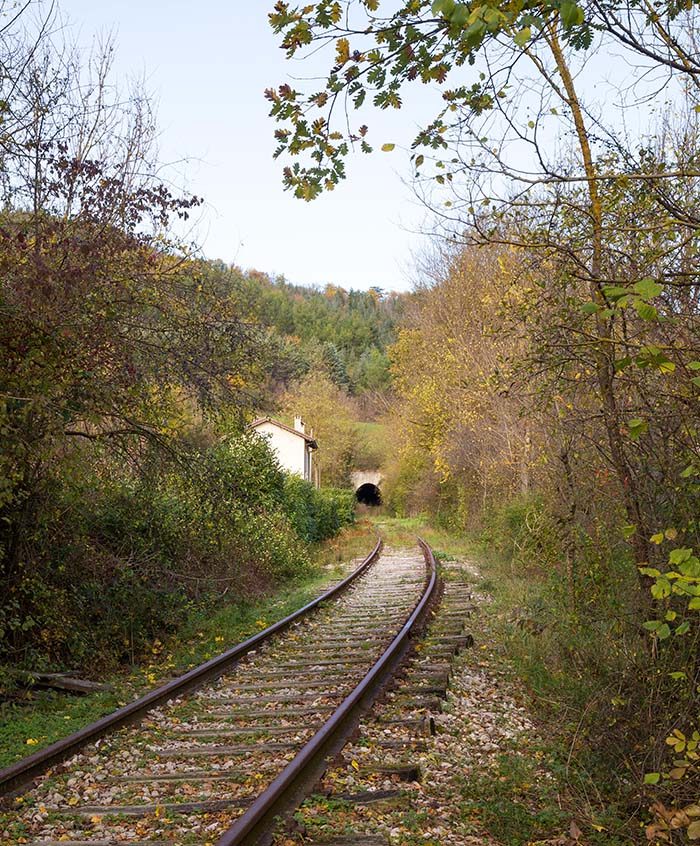 Among bridges and tunnels, real masonry works built using bricks from local kilns, of a unique grace, and which can fortunately still be admired today, you could see untouched woods where you could see hares and roe deer running freely, while squirrels and buzzards shook the snow from the trees. Images of true poetry!
Among bridges and tunnels, real masonry works built using bricks from local kilns, of a unique grace, and which can fortunately still be admired today, you could see untouched woods where you could see hares and roe deer running freely, while squirrels and buzzards shook the snow from the trees. Images of true poetry!
Seeing the flakes fall in that paradisiacal landscape was like being at the cinema. In spring and autumn it was an explosion of colours.
The passengers on that stretch often interrupted the conversation to let nature speak, the mind let itself go to fantasy, imagining seeing the mercenary captain Federico da Montefeltro and his army riding towards the city symbol of the Renaissance, while coming from Florence or Mantua, finally you could see the turreted city in the background of the last bridge to face, Urbino, the ducal jewel.
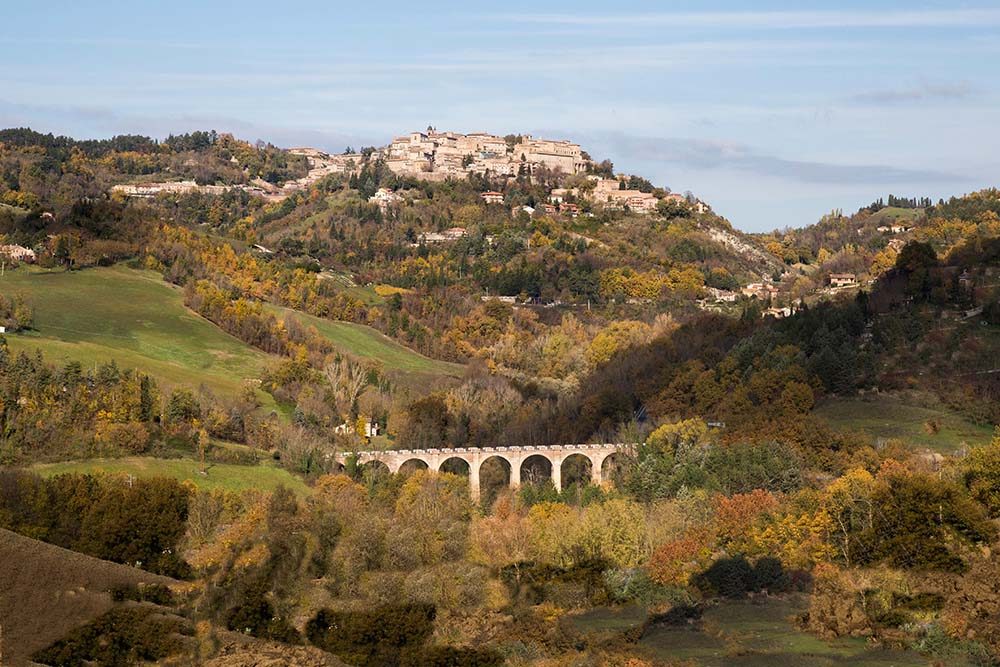
Now that magnificent stretch of railway is kept in good condition by an association that is working to have the line restored. Let's hope so!
The images were taken on November 18, 2017 by the photographer Giulio Gostoli and show the Fermignano Urbino route. We were struck by the image of the woman planting flowers on the defunct tracks. The people of these parts are poetic by nature!
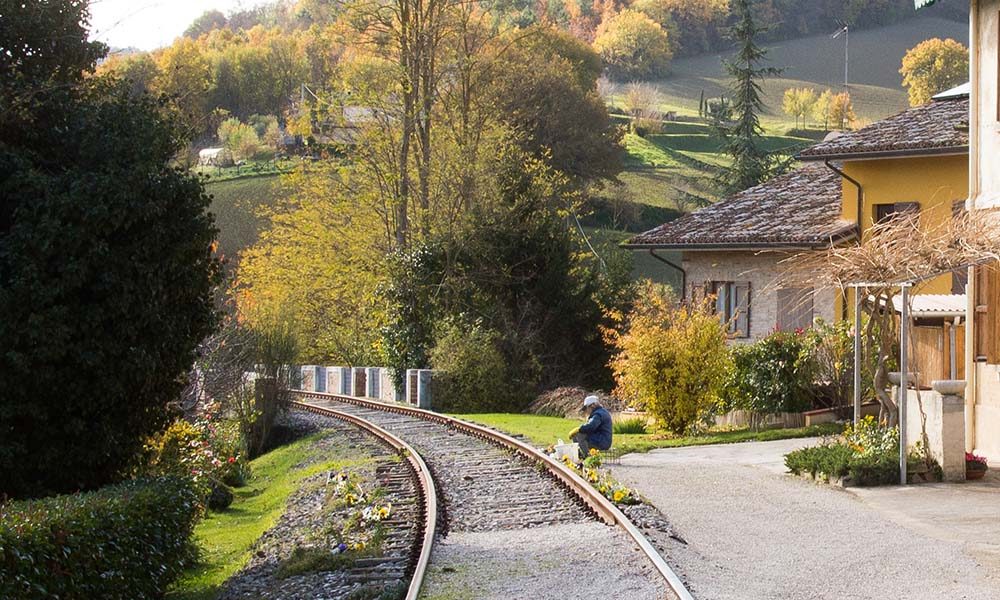 {:} {: en}
{:} {: en}
Once upon a time there was a railroad track leading to Urbino…
 the railway from the coast to the ducal city and back, 48 km at the “electrifying” speed of 60 km per hour. The train used to start puffing early in the morning at the train station of Fano, to collect passengers stepping off the superfast train Milan – Lecce that was not usually on time. Passengers were leaving a crowded wagon, then were rushing to catch the connecting train, with its plain and cold wood benches and the vague smell of sanitizer, people would take their seats and then they would clearly hear the sound of the whistle and the dorrs would close. The train leaves and the trip in the past was beginning, with a typical composure of rural areas, slowly across the countryside: from plowed fields of the flatland on the side of the river Metauro, up the woods and high hills typical of the Duchy of Montefeltro. In those times, there was no smartphone, so you knew how to spend the time. You could simply look at the beautiful landscape, and it was a stunning experience, reading a book or chatting to your acquaintance. Passengers were usually a student or a professor, you could tell from the bag full of books and notes. There were students reviewing for the exam, and there was always – cannot say exactly why – a woman weaving. Winter was the most exciting season, you were leaving the coast in the rain and then going into the backcountry you would also see the snow. And it could snow very often in Urbino. It was so cold in the winter that the train was the best way to get there, without any stop along the way.
the railway from the coast to the ducal city and back, 48 km at the “electrifying” speed of 60 km per hour. The train used to start puffing early in the morning at the train station of Fano, to collect passengers stepping off the superfast train Milan – Lecce that was not usually on time. Passengers were leaving a crowded wagon, then were rushing to catch the connecting train, with its plain and cold wood benches and the vague smell of sanitizer, people would take their seats and then they would clearly hear the sound of the whistle and the dorrs would close. The train leaves and the trip in the past was beginning, with a typical composure of rural areas, slowly across the countryside: from plowed fields of the flatland on the side of the river Metauro, up the woods and high hills typical of the Duchy of Montefeltro. In those times, there was no smartphone, so you knew how to spend the time. You could simply look at the beautiful landscape, and it was a stunning experience, reading a book or chatting to your acquaintance. Passengers were usually a student or a professor, you could tell from the bag full of books and notes. There were students reviewing for the exam, and there was always – cannot say exactly why – a woman weaving. Winter was the most exciting season, you were leaving the coast in the rain and then going into the backcountry you would also see the snow. And it could snow very often in Urbino. It was so cold in the winter that the train was the best way to get there, without any stop along the way.
The most exciting section is still to remember with nostalgia – the last train was in 1987 – between Fermignano and Urbino: slope of 21% – 25% and the engine of the (sometimes diesel or even steam) locomotive would struggle along the climbing and bends , so that it would even slow down. Bridges and tunnels on the way, masonry works built using uniquely refined bricks from local furnaces, and that you can see today, you could see wild woods with hares and roe deer running freely, while squirrels and buzzards were clearing the snow from the trees. Those were real poetry images! Snowflakes falling in a heavenly landscape was like being at the movies. Spring and autumn were like a color explosion.
 Passengers in that line would often stop chatting so that nature was expressing itself, they would free their minds and would imagine Captain Federico of Montefeltro and his army riding towards the city of Renaissance, coming from Florence or Mantua, and then in the end you would see the city walls on the background across the last bridge, Urbino, i.e. a ducal jewel.
Passengers in that line would often stop chatting so that nature was expressing itself, they would free their minds and would imagine Captain Federico of Montefeltro and his army riding towards the city of Renaissance, coming from Florence or Mantua, and then in the end you would see the city walls on the background across the last bridge, Urbino, i.e. a ducal jewel.
 Now the railway line is kept in good conditions by an association that is working to have the line in operation again. Let's hope they succeed!
Now the railway line is kept in good conditions by an association that is working to have the line in operation again. Let's hope they succeed!
 Pictures were taken on 18 November 2017 by photographer Giulio Gostoli and they show the line between Fermignano and Urbino. We were moved by the image of the woman planting flowers on the defunct railtracks. Local people are poets by nature!{:}
Pictures were taken on 18 November 2017 by photographer Giulio Gostoli and they show the line between Fermignano and Urbino. We were moved by the image of the woman planting flowers on the defunct railtracks. Local people are poets by nature!{:}

